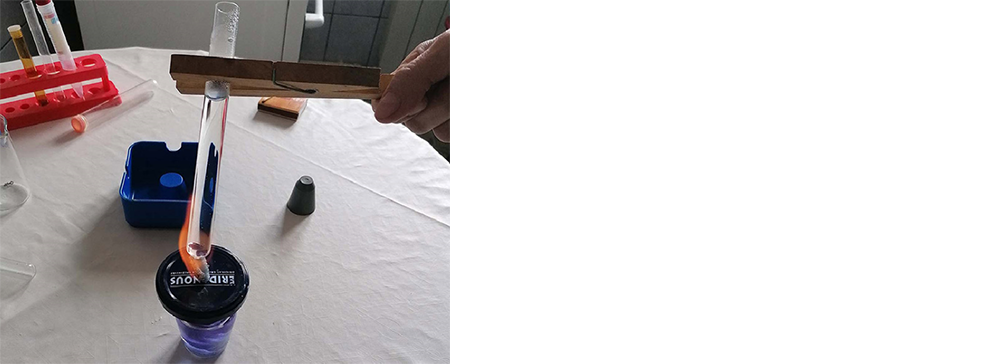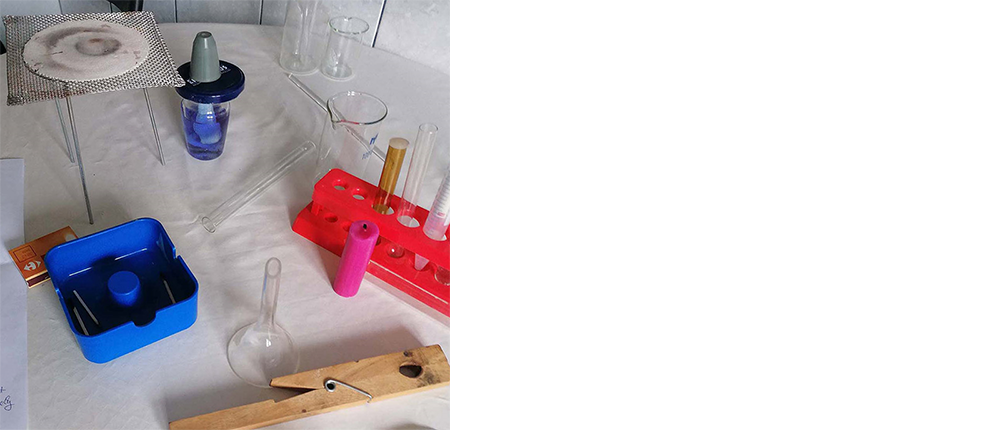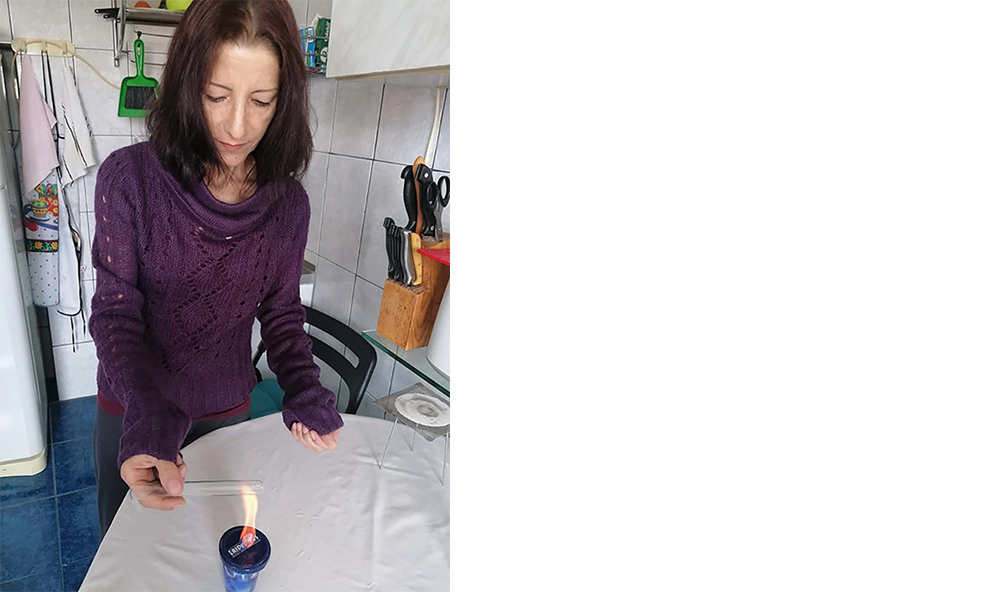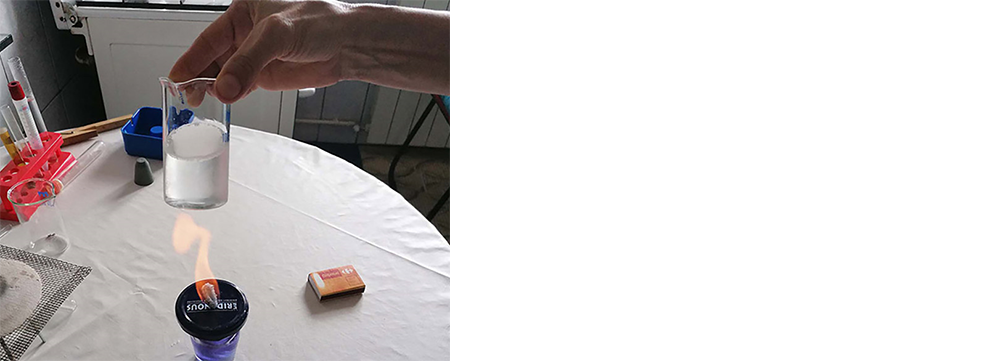I.7. Summary - Chemistry, science of nature
1. Watch the following images and find out which rules were broken and which would endanger our lives:
.....................................................

.....................................................

.....................................................

.....................................................

.....................................................

.....................................................

.....................................................

Matter. Body. Substance.
Matter is everything that surrounds us.
Matter has two forms of existence:
- Substance or material.
- Field:
- gravitational (around a particle that has mass or around the Earth);
- electrostatic (around an electrified body);
- electric (around an electric circuit);
- magnetic (around a magnet or an electric circuit);
- electromagnetic (the mutual generation of electric and magnetic fields).
The body represents the portion of matter with its own shape and its own volume (well determined).
Examples of bodies: human body, table, chair, house, glass of milk, etc.
Bodies are made up of matter with:
- Homogeneous composition throughout its own mass which are called substances (examples: metals, water, oxygen, carbon dioxide, diamond, kitchen salt, bruised stone, nitrogen, etc.).
- Heterogeneous (which is not the same) composition which are called materials. For example: wood (contains cellulose, lignin, water), paper (cellulose), cement, concrete, porcelain, granite, plastics, glass, etc.).
The nail: the nail is a body because it has its own shape and its own volume.

Iron: iron is a substance because it has no shape of its own and can take many forms: a nail, a doorknob, a table, a chair, a cabinet, etc.

Physical and chemical phenomena.
Physical phenomena are the transformations of a body as a result of which the composition of the substance of which the body is made remains unchanged.
Examples of physical phenomena:
-
All the phenomena that occur with the change of state of aggregation:
- Melting (the transition of the substance from a solid state to a liquid state, by heating);
- Solidification (the transition of the substance from a liquid state to a solid state, by cooling);
- Vaporization (the transition of the substance from a liquid state to a gaseous state, by heating);
- Condensation (the passage of the substance from a gaseous state to a liquid state, by cooling);
- Sublimation (the transition of the substance from a solid state to a gaseous state, by heating);
- Desublimation (the passage of the substance from a gaseous state to a solid state, by cooling).
-
Deformation (change of shape);
-
Movement (change of position relative to the landmark);
-
Heating / Cooling (temperature change);
-
Expansion / Contraction (change in temperature and volume);
-
Coloring (color change);
-
Crushing (changing the size of the crystals);
-
The passage of electric current through a circuit;
-
Interaction of magnets or electrified bodies (attraction or repulsion);
-
Reflection and Refraction of light (the return of light in the first medium, respectively the passage of light in the second medium, with a change in the direction of propagation);
-
Rainbow formation (decomposition of white light into rainbow colors), etc.
Chemical phenomena are transformations that change the composition of substances, resulting in other substances.
Examples of chemical phenomena:
-
Combustion of fuels (transformation of the substance in the presence of oxygen into carbon dioxide and water);
-
Rusting of iron (iron turns into rust, reddish);
-
Coking of copper (copper turns into coking, greenish, toxic);
-
Fermentation of must (wine is obtained);
-
Acidification of the wine (vinegar is obtained);
-
Milk fermentation (beaten milk is obtained);
-
Rotting of plants (it is caused by a fungus that destroys the plant);
-
Photosynthesis (plants in the presence of light transform carbon dioxide into oxygen);
-
Carbonization of sugar;
-
Slow oxidations in the body (breathing of beings, oxidation of fats, proteins and carbohydrates from food).
Physical and chemical properties
The characteristic attributes with a help of which a substance is recognized are called properties.
Properties can be physical and chemical.
Physical properties are those attributes that refer to appearance or transformations that do not change the composition of the substance.
Physical properties can be classified into:
1. Observable with the help of the sense organs:
- By sight: state of aggregation (solid, liquid, gas), color (colorless-without colour or colored), gloss (shine).
- By smell: odorless (has no smell), pleasant, irritating, specific smell (milk, chlorine, vinegar - we say they have a specific smell).
- By touch: plasticity, elasticity, soft (hardness), hard (hardness).
2. Measurable with the help of devices:
- Physical constants:
- Melting temperature (the temperature at which a solid substance begins to melt = Tt);
- Boiling temperature (the temperature at which a liquid begins to boil = Tv);
- Density

- Refractive index

- Solubility coefficient (shows how much substance dissolves in 100 g of water, at a certain temperature);
- Hardness (it is measured according to a scale of hardness from 1 to 10, called "Mohs Scale", where talc has 1 and diamond the highest hardness 10);
- Electrical and thermal conductivity (passage of electric current, respectively heat, without movement of substance).
Chemical properties are those properties that refer to transformations that change the composition of the substance.
Examples of chemical properties:
- The property of burning (after burning the paper, we no longer have paper, we have ashes);
- The property of fats to go rancid (the rancidity is a different substance than the non-rancid oil);
- The property of wine to turn into vinegar (vinegar is a different substance than wine);
- The property of milk to turn sour (sour milk has a different composition and other properties than sweet milk);
- The property of iron to rust (rust is a substance other than iron);
- Copper's property of coking (coking is a different substance from copper;
- The property of wood to rot (rot has a different composition than wood).